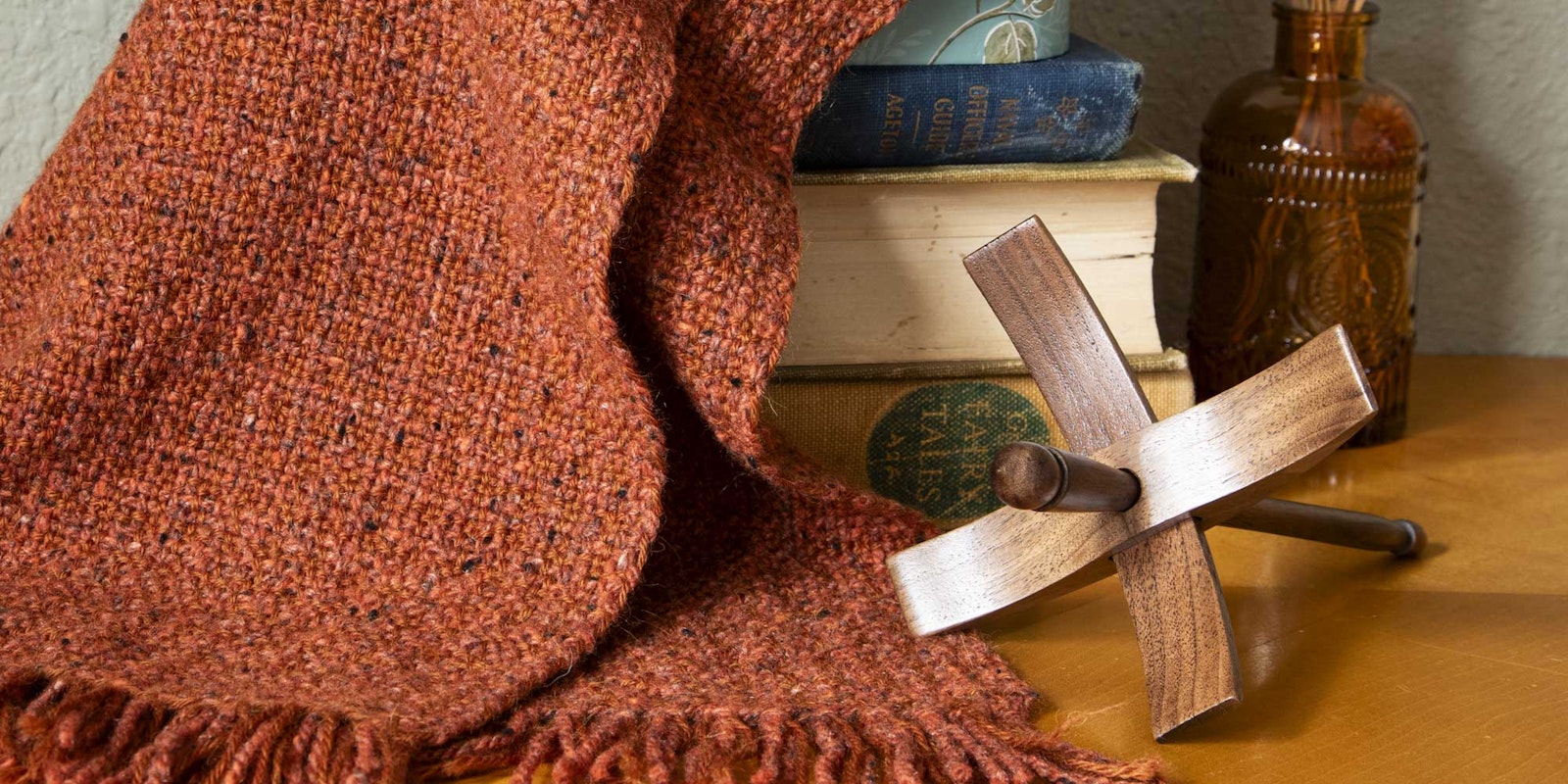All Access Exclusive
Spinning for the Queenslander Scarf: Using Differential Shrinkage to Your Advantage
Learn to add dimension to your spinning and weaving with differential shrinkage—plus get a bonus article and pattern!
Learn to add dimension to your spinning and weaving with differential shrinkage—plus get a bonus article and pattern! <a href="https://spinoffmagazine.com/spinning-for-the-queenslander-scarf-using-differential-shrinkage-to-your-advantag/">Continue reading.</a>
https://spinoffmagazine.com/cdn-cgi/image/format=auto/https://www.datocms-assets.com/75073/1731013346-graves-queenslander-scarf.jpg?auto=format&w=900
When I first learned about the principle of differential shrinkage, it was an accident. I’d inherited a stash of someone else’s mystery handspun. All the different yarns seemed like animal fibers, so I wove them together in a project with each yarn forming thick color-blocked stripes.
When I wet-finished the project, it became a rippled mess. My even selvedges turned wavy, and I was disappointed.
What happened? It turns out that each fiber has a different tendency to shrink. This concept is sometimes called differential shrinkage. While I first learned about it in a frustrating way, it has endless possibilities.
Later projects used silk and Merino blends to create an intentionally textured surface. Because silk does not shrink as much as Merino, the Merino will puff up around the silk fibers and create a bouclé effect. The higher the silk content, the more pronounced this effect will be.
 Left: When this 85% Merino/15% silk fabric came off the loom,it was completely flat. Right: After washing, the Merino fulled slightly but the silk did not, creating a nubbly texture. Photos by Pamela K. Schultz
Left: When this 85% Merino/15% silk fabric came off the loom,it was completely flat. Right: After washing, the Merino fulled slightly but the silk did not, creating a nubbly texture. Photos by Pamela K. Schultz
More Discoveries
I’d like to say that every project after my first discovery of differential shrinkage went perfectly. Of course, mistakes and surprises are part of the process. For a jacket made out of a 32 ounce (900 gram) gradient of handspun yarn, I knew that most skeins contained a blend of wool, alpaca, and silk.
ALL ACCESS EXCLUSIVE
Unlock the Full Article with a Spin Off All Access Subscription
Get instant access to this article and the entire Spin Off library of projects, inspiration, and expert instruction. With your subscription, you’ll receive:
Unlimited access to the Spin Off Library, a digital miscellany of ebooks, patterns, and more exclusively for All Access subscribers.
Stream 50+ spinning videos and workshops
Master the art and science of spinning—from wheel mechanics to fiber prep
Learn from experienced spinners, dyers, and fiber artists in every issue
Explore in-depth tutorials, inspiring projects, and trusted techniques
Includes full access to print and digital issues of Spin Off Magazine
Spin Off explores the art and craft of making yarn. Each issue connects you to new and familiar voices in the handspinning community and is packed with information about fibers, tools, and traditions to inspire your creativity.
Plans start at just $11.99/month. Cancel anytime.
 Left: When this 85% Merino/15% silk fabric came off the loom,it was completely flat. Right: After washing, the Merino fulled slightly but the silk did not, creating a nubbly texture. Photos by Pamela K. Schultz
Left: When this 85% Merino/15% silk fabric came off the loom,it was completely flat. Right: After washing, the Merino fulled slightly but the silk did not, creating a nubbly texture. Photos by Pamela K. Schultz
